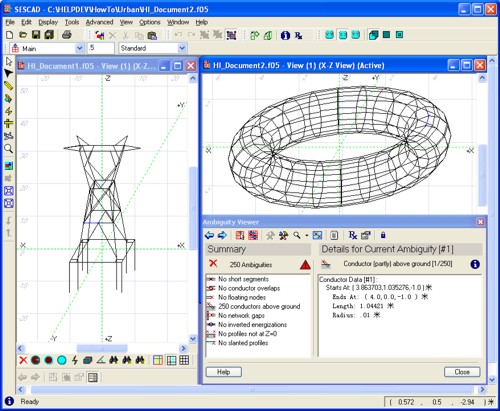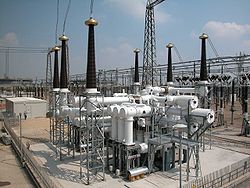SESCAD: An Object-Based Graphical Environment for the Development of Arbitrary Networks of Conductors
The CDEGS software possesses a unique combination of input/output processors that will satisfy the most demanding users. With the smart and intuitive Windows interface, CDEGS unleashes all of its engineering power through an unprecedented level of data input simplicity, which dramatically increases productivity. SES knows that everyone likes the look and feel of a Windows-based interface, but this software is meant for those will go directly to your electrical engineering soul. Just describe your system, and let CDEGS show you things you never knew existed. The specification of the data defining conductor networks takes up most of the time involved in preparing input files. With this in mind, SES has designed SESCAD, a graphical utility for the development of conductor networks.
SESCAD is a program that allows viewing or editing three-dimensional networks consisting of straight conductor segments. It is specially adapted for users of SES' MALT, MALZ and HIFREQ programs. This CAD program uses an object-oriented approach to network development. Elementary objects (conductors and observation profiles) can be created by simply drawing them or by entering data in dialogs boxes. Composite objects can be formed by grouping existing objects together. They can be viewed from any direction, in a variety of ways. The objects can be selected, copied, pasted, deleted, etc., in the standard way for Windows applications. A rich set of tools is available to manipulate them.
Toolboxes are available to automate certain tasks that could otherwise be highly time-consuming. These include rotating, translating and scaling an object or a duplicate of the object, aligning and distributing objects, and examining the network for various defects such as overlapping conductors or undesirable gaps.

Power Tools are also available. They can be used to force two conductors to meet at a given point, to stretch a conductor until it meets another one or to make sure that no gaps are present in the network, etc..
All operations carried out on objects can be easily undone. Several options are available to customize the behavior of the tools. The network can be viewed from any position using either a parallel projection view, a plan view, or a perspective view. It is possible to zoom in on a portion of the network by a factor of as much as 1 million, and to go back to previous zoom levels.
The program can save the network data in its native format or as a command file. It can also read these same file formats. It can import and export DXF compatible files.
SESCAD can exchange data automatically with the Input Toolbox and can therefore supplement the data entry capabilities of that program. Most of program's functions are directly accessible from the Toolbars or from the context-sensitive menus. Extensive on-line help is available for every screen in the program.





